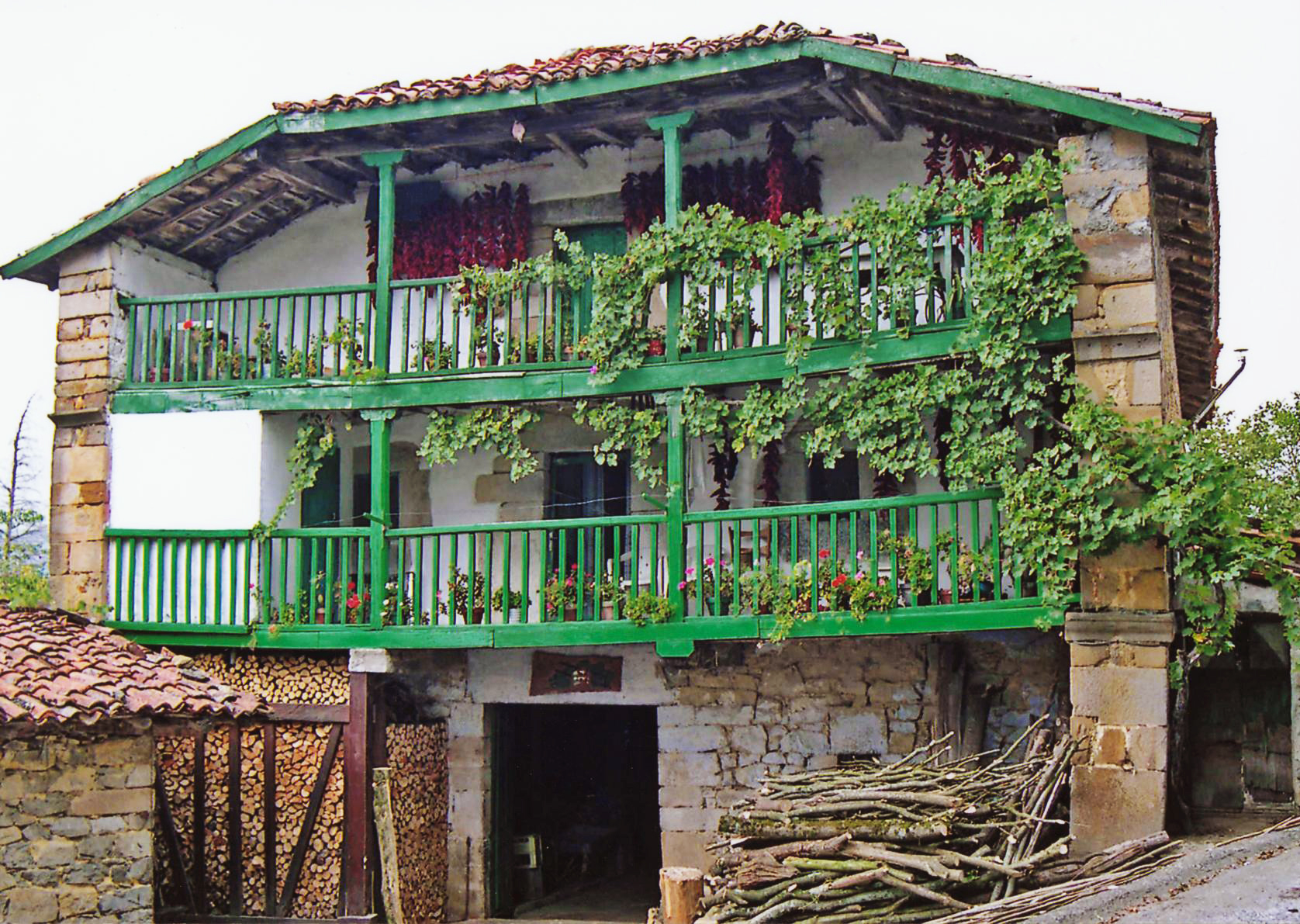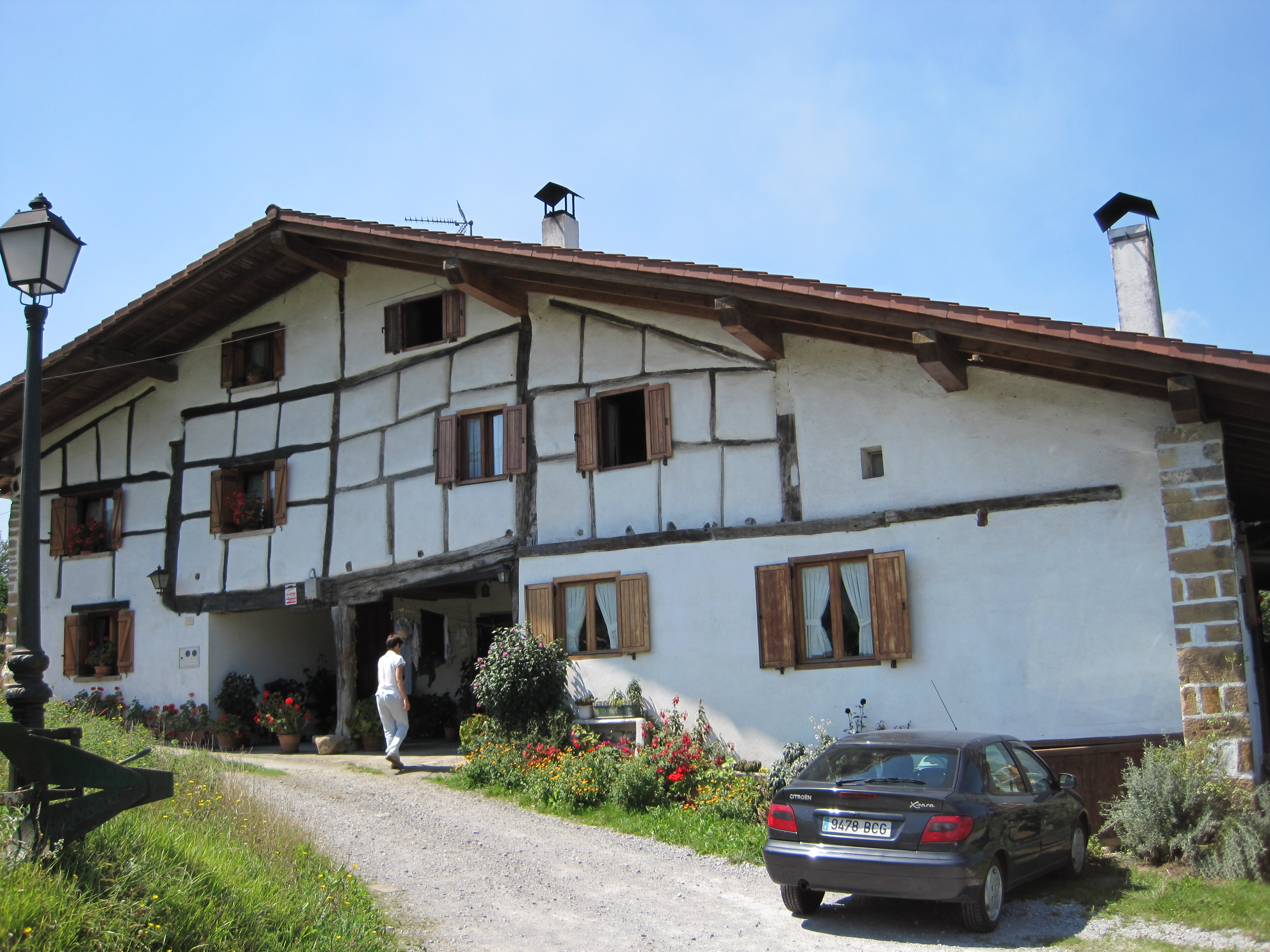Basque ethnography at a glance
Rural houses in Bizkaia have traditionally been devoted to crop and livestock farming. In order to make the most of daylight and solar heat, farmhouses are oriented to the sun (eguzkira begira, in Basque), facing south, east or southeast. There are basically two farmhouse designs: lower buildings with a spacious main floor, mostly arable farmsteads, and taller livestock farms with smaller floor plans.
The first type of farm is found in large areas of the territory, namely the Busturia and Durango regions. These houses count with a ground level and two floors above. They typically comprise a large porch (atartea), the kitchen (ezkaratza), the stable (kortea), and a bedroom for the elderly on the bottom floor; the sitting room (salea) and further bedrooms (logelak) on the first floor; and the loft (kamarea) on top, sometimes containing an additional higher decking just below the roof.
Most have a double-gable roof (ur bira), although occasionally we find farmhouses with a third sloping side at the rear (miru-buztana). The porch is usually supported by an exposed timber beam and a central oak or stone post. Stone arched porches are not rare either. High status farms boast masonry corner blocks (kantoi-harriak).
The second type is characteristic of the Encartaciones district and the Arratia Valley. The traditional three-storey farm of the Carranza Valley is rectangular in shape, with the facade shorter in length than the sidewalls. The stable and storage space for gardening tools occupy the ground floor, and the living area and kitchen are situated on the first floor. Straw and harvest products are kept in the loft (locally known as sobrao). Two balconies run across the full frontage protected by extended enclosure walls (pipianos). The roof is three-sided, and its distinctive extra slope at the front is called morisca. Arratia farms have an access stairway built against the facade.
Segundo Oar-Arteta – Etniker Bizkaia – Etniker Euskalerria Groups
Translated by Jaione Bilbao – Language Department – Labayru Fundazioa
(Adapted from House and Family, part of the Ethnographic Atlas of the Basque Country collection)



